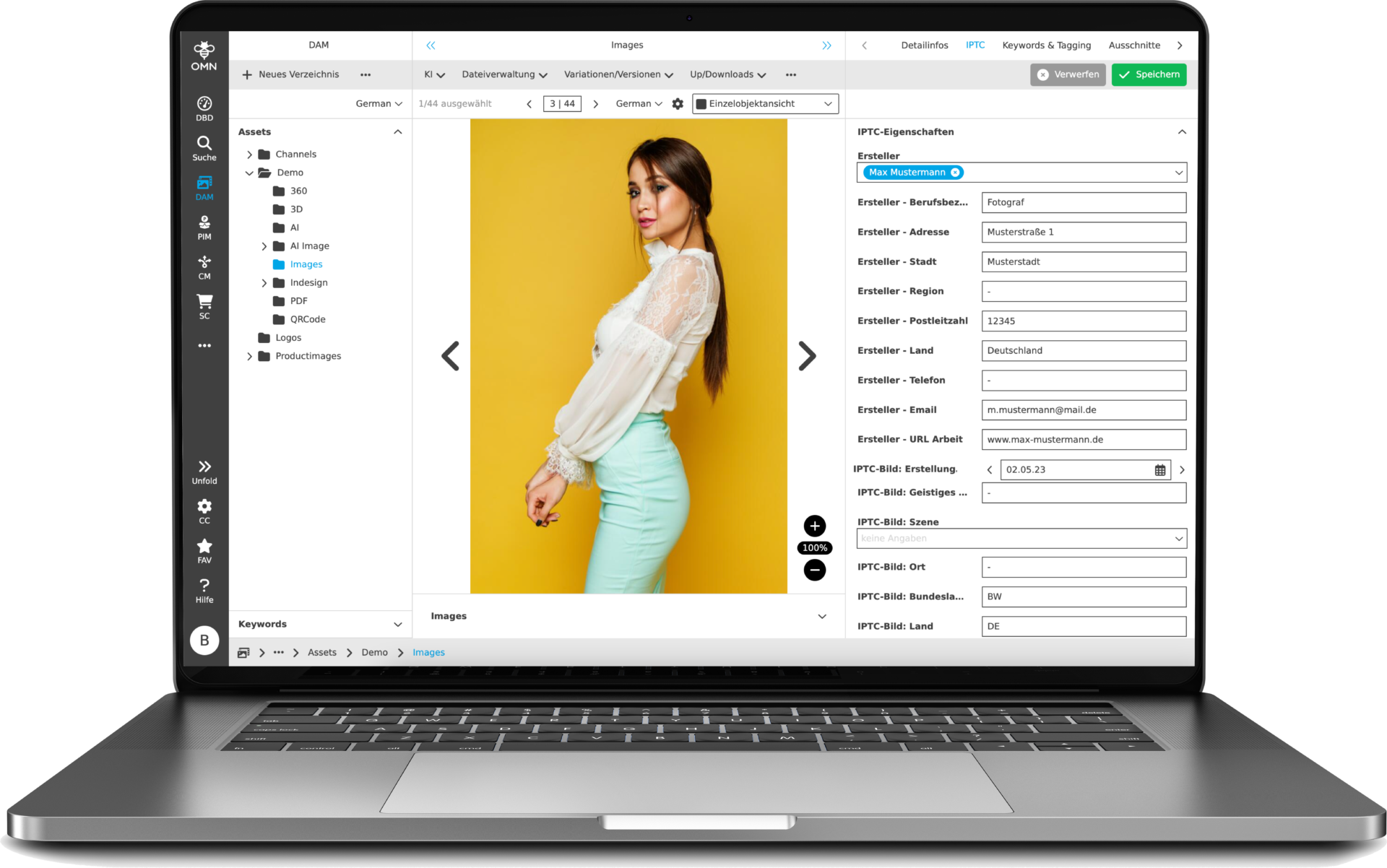Why store owners need a DAM system
DIGITAL ASSET MANAGEMENT
Rich product content is undoubtedly an effective tool for setting the right impulses on the buyer journey in the web store. However, managing and controlling the volumes of content that this entails causes difficulties for many companies. Here we show you how you can use a DAM system to create optimal conditions for your product communication in the web store and efficiently transform your product detail pages into impressive product experiences.
In the web store, the purchase decision is basically made on the basis of the product detail pages and the content presented there. Therefore, it is of great importance to design the individual pages in such a way that they cover all the details about the product in question and remove any doubts. Rich product content such as comparison tables, image collages, 3D images and demonstration videos are particularly suitable for this purpose. In addition, such content can be used to drive cross-selling and reduce the risk of mispurchases and returns. For the maintenance of the webshop, however, rich product content means that a large number of different contents have to be managed and controlled – and this is exactly where the so-called DAM systems come into play.

Why a DAM system?
A look at practice shows that many companies do not fully exploit the potential of their asset base in product and brand communication and often have difficulties in maintaining their sales channels in a targeted and efficient manner. Often there is a lack of overview, and as a rule the individual assets are only used once for a specific purpose before they disappear in confusing folder structures. A DAM system that acts as an asset library and supports all workflows around the management and distribution of digital content can remedy this situation and ensure that the expensively acquired or even painstakingly created content is repeatedly used and monetized – for maximum ROI.
DAM brings order to your digital asset management
With the increasing number of relevant sales channels, the amount of digital content in companies also continues to grow. If this content is then managed in folder structures or even in systems such as PIM or CMS that are not geared towards digital asset management, data silos, duplicates and lengthy searches for specific files are pre-programmed.
A DAM system therefore centralizes digital asset management and makes a company’s asset inventory accessible to all stakeholders in a structured, media-neutral, and versioned manner. In addition, intelligent search functions ensure that searched files can be retrieved and used quickly and specifically via keywords and image matching.
DAM brings efficiency to your workflows
The provision of product presentations and creative content often involves many different departments and employees, as well as external parties such as agencies or photographers. Accordingly, it can take quite a while until, for example, a photographed article can be made available by the photographer as a product image in the web store.
DAM systems therefore offer the possibility of modeling workflows and flexibly and decisively assigning user roles, authorizations and tasks to users. This enables managers to ensure that projects and work steps are completed in the right order, which not only has a positive impact on collaboration, but also on time-to-market and the quality of the final content.
DAM gets the optimum out
DAM systems also offer a variety of features and tools that replace manual steps, further simplifying and accelerating editing and correction loops. In state-of-the-art systems, these functions are based on AI components, allowing content to be automatically tagged and integrated into different systems and contexts. Workflow engines with release stages ensure that those responsible maintain an overview and that licensing rights and brand standards are adhered to. In addition, AI-based evaluations reveal optimization opportunities for the individual sales channels and touchpoints.
A DAM system achieves its full potential when it is used in combination with other communication-related systems such as PIM and PXM. Through appropriate integration, media content from the DAM can be linked directly to the product information stored in the PIM and syndicated to all connected channels. Be it the web store, the online marketplace, the social media channels or even the print catalog – a digital ecosystem with DAM, PIM and PXM not only optimizes time-to-market, but also reduces sources of error and thus ensures that your customers encounter impressive product experiences at all touchpoints.
Do you already know OMN?
OMN is apollon’s PXM platform that combines all disciplines relevant for product and brand communication under one roof and thus enables efficient management and control of individual product data and output-ready product content. Thanks to an integrated syndication function and various AI services, you can communicate with OMN in real time and take care of product and brand experiences at every touchpoint in the sense of omnichannel marketing.
Would you like to get to know our OMN DAM?
EXPERIENCE OUR DAM LIVE AND CONVINCE YOURSELF!